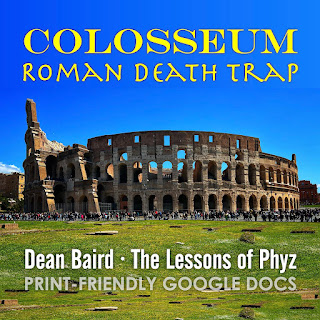Among the most hackneyed of tweet opening phrases is "I don't know who needs to hear this, but...". The author is attempting to signal an imminent dose of universal wisdom.
This episode of NOVA popped up as this week's summer rerun for NOVA. I visited the Colosseum in April and saw a lift made of lumber in the bowels (hypogeum) of the structure. This program tells its story, and much, much more. As the title implies, it was not a place of joy, mirth, or happiness for those who participated in the spectacles.
But there was state-of-the-art engineering going on in there. So ... I don't know who needs to use this, but there is cromulent STEM content in this episode: mechanical and hydraulic engineering as well as emission spectroscopy and bone-strengthening nutritional supplements for gladiators. Gladiators were trained in fight schools and were provided with health care. Not all gladiator fights were allowed to end in a death (given the investments in these fighters). But releasing wild apex predators into the arena via lifts and trap doors kept audiences coming back for more.
One of the ancient world's most iconic buildings, the Colosseum is a monument to Roman imperial power and cruelty. Its graceful lines and harmonious proportions concealed a highly efficient design and advanced construction methods that made hundreds of arches out of 100,000 tons of stone. In its elliptical arena, tens of thousands of gladiators, slaves, prisoners, and wild animals met their deaths. Ancient texts report lions and elephants emerging from beneath the floor, as if by magic, to ravage gladiators and people condemned to death. Then, just as quickly, the Colosseum could be flooded with so much water that ships could engage in sea battles to the delight of the crowd. Now, archaeologists and engineers are teaming up to recreate a 25-foot lifting machine and trap door system capable of releasing a wolf into the Colosseum's arena for the first time in 1,500 years. Do they have what it takes to replicate the innovation and ingenuity of the Romans?

No comments:
Post a Comment